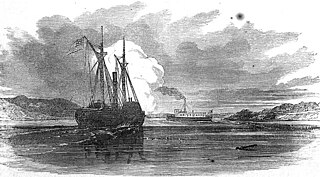
A tugboat or tug is a marine vessel that manoeuvres other vessels by pushing or pulling them, with direct contact or a tow line. These boats typically tug ships in circumstances where they cannot or should not move under their own power, such as in crowded harbors or narrow canals, or cannot move at all, such as barges, disabled ships, log rafts, or oil platforms. Some are ocean-going, and some are icebreakers or salvage tugs. Early models were powered by steam engines, which were later superseded by diesel engines. Many have deluge gun water jets, which help in firefighting, especially in harbours.

HMS Warspite was one of five Queen Elizabeth-class battleships built for the Royal Navy during the early 1910s. Completed during the First World War in 1915, she was assigned to the Grand Fleet and participated in the Battle of Jutland. Other than that battle, and the inconclusive Action of 19 August, her service during the war generally consisted of routine patrols and training in the North Sea. During the interwar period the ship was deployed in the Atlantic Ocean and the Mediterranean Sea, often serving as flagship, and was thoroughly modernised in the mid-1930s.

SS Foundation Franklin was a seagoing salvage tug built for the Royal Navy as HMS Frisky in 1918. In 1924, the tugboat was sold and renamed Gustavo Ipland before being acquired in 1930 by Foundation Maritime and renamed Foundation Franklin. The tugboat became famous for many daring salvage operations and rescues between 1930 and 1949. Her many rescues and salvage triumphs were celebrated in Farley Mowat's book The Grey Seas Under. In 1948, the ship was damaged in a hurricane and not considered repairable. The tug was broken up for scrap in 1949 at Halifax, Nova Scotia.
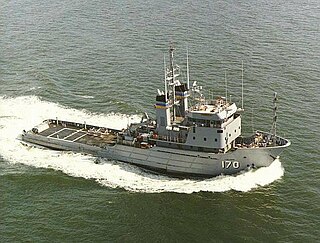
USNS Mohawk (T-ATF-170) was a United States Navy Powhatan-class tugboat operated by the Military Sealift Command from 1980 to 2005.

Forceful was a sea-going tugboat built for the Queensland Tug Company by Alexander Stephen and Sons Ltd in Govan, Scotland in 1925. She worked at her homeport of Brisbane, Australia between 1926 and 1970 berthing ships and assisting nearby casualties. During World War II she was commissioned into the Royal Australian Navy in early 1942 as HMAS Forceful (W126), based at Fremantle and Darwin, until returning to commercial service in October 1943. She was preserved as a museum ship until 2023 when she was scrapped.
Risdon Archibald Beazley (1904–1979) was the founder of Risdon Beazley Ltd, a Marine salvage company that operated from 1926 to 1981 in Southampton, England.
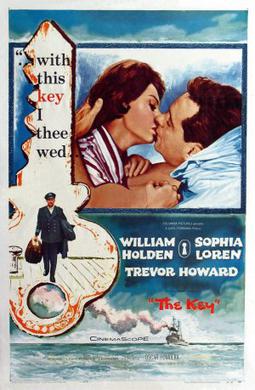
The Key is a 1958 British-American war film set in 1941 during the Battle of the Atlantic. It was based on the 1951 novel Stella by Jan de Hartog and was directed by Carol Reed. William Holden, Sophia Loren and Trevor Howard starred in the production.
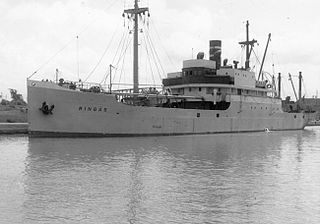
Francisco Morazan was a 1,442 GRT cargo ship that was built in 1922 as Arcadia by Deutsche Werft, Hamburg, for German owners. She was sold in 1934 and renamed Elbing. She was seized by the Allies in the River Elbe, Germany in May 1945, passed to the United Kingdom's Ministry of War Transport and renamed Empire Congress. In 1946, she was allocated to the Norwegian Government and renamed Brunes.
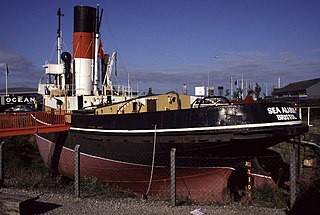
Admiralty tugs were tugboats built for and operated by the Royal Navy. These were vessels built to Admiralty specifications and in specific classes during the First and Second World Wars. They were built to meet the Royal Navy's demand for auxiliary vessels and to supplement the civilian tugs requisitioned by the Admiralty for war service.

Kommuna is a submarine salvage ship in service with the Russian Navy's Black Sea Fleet and the world's oldest active duty naval vessel. A double-hulled catamaran, she was laid down at the Putilov Factory in St. Petersburg in November 1912 as Volkhov. The ship was launched the following year, and commissioned on 14 July 1915. She was renamed Kommuna on 31 December 1922. Kommuna has served in the Russian Imperial, Soviet, and Russian Federation navies through the Russian Revolution and two World Wars.
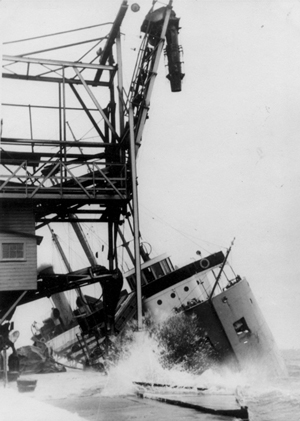
SS Brulin was a lake freighter that worked the North American Great Lakes routes from 1924 to 1960. She was renamed Outarde in 1939, and James J. Buckler in 1960, shortly before she ran aground and sank during salvage operations. Brulin was built by Palmers Shipbuilding and Iron Company, Hebburn-on-Tyne and launched on 31 July 1924, for the Montreal Forwarding Company. She was built to the maximum dimensions of the canal locks that preceded the St Lawrence Seaway.

USS Hopi (AT-71) was a Navajo-class fleet tug constructed for the United States Navy during World War II. Her purpose was to aid ships, usually by towing, on the high seas or in combat or post-combat areas, plus "other duties as assigned." During World War II she was assigned to the Europe-Africa-Middle East Theater where she participated in four campaigns earning four battle stars.

The Amboy was a wooden schooner barge that sank along with her towing steamer, the George Spencer on Lake Superior off the coast of Schroeder, Cook County, Minnesota in the United States. In 1994 the remains of the Amboy were added to the National Register of Historic Places.













